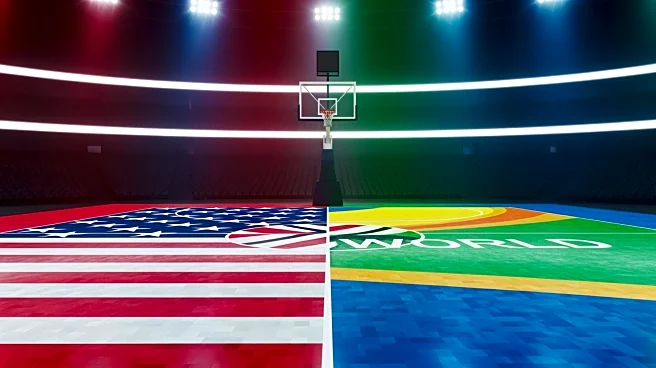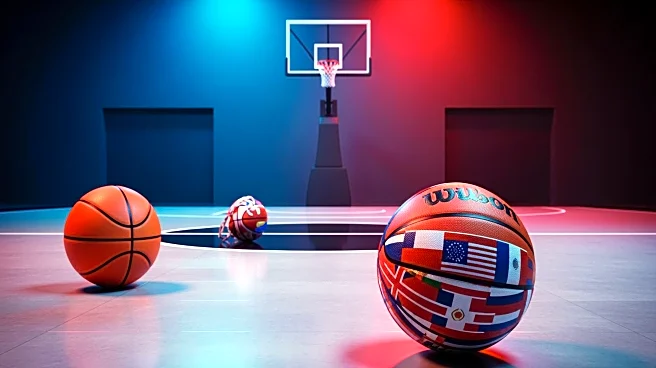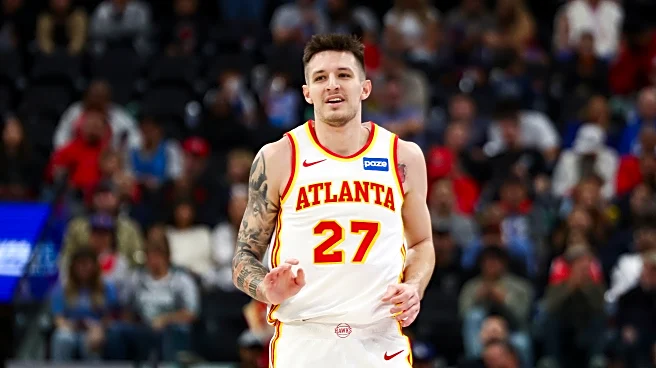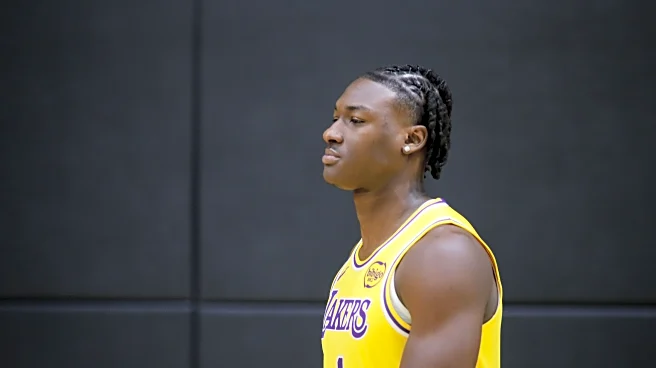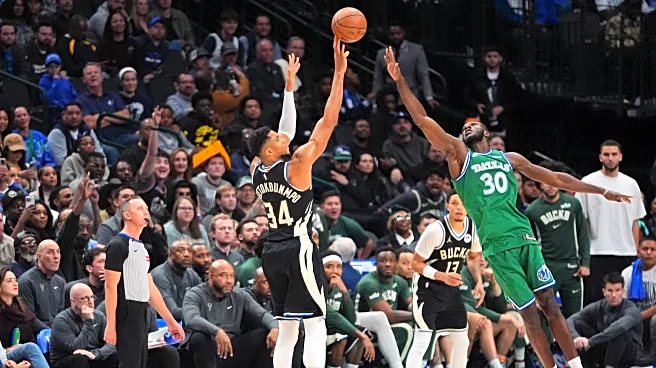What's Happening?
The NBA has announced a new format for the All-Star Weekend, scheduled for February 15, 2026, at the Intuit Dome in Los Angeles. The traditional conference-based structure will be replaced by a three-team
competition, consisting of two U.S. teams and one international team. Each team will have eight players, with the starting five selected based on combined votes from fans, media, and players. The event will feature a round-robin format for the first three quarters, followed by a final quarter where the top two teams compete. This change aims to enhance the competitive nature and global appeal of the All-Star Game.
Why It's Important?
The new format reflects the NBA's commitment to innovation and global engagement, showcasing the league's diverse talent pool. By featuring international players prominently, the NBA aims to strengthen its global brand and attract a wider audience. This change could lead to increased viewership and fan participation, as the All-Star Game becomes a platform for celebrating international basketball talent. The format also encourages strategic gameplay, as teams must navigate the round-robin stage to secure a spot in the final quarter, adding excitement and unpredictability to the event.
What's Next?
As the All-Star Weekend approaches, teams and players will prepare for the new format, strategizing to maximize their chances of success. The selection process for players will be closely watched, as fans, media, and players contribute to the voting. The event is expected to draw significant attention, with potential implications for player recognition and marketability. The success of the new format could influence future All-Star Games and inspire similar innovations in other sports leagues.
Beyond the Headlines
The introduction of the US vs. World format highlights the NBA's role in promoting international basketball and fostering cross-cultural connections. This approach aligns with broader trends in sports, where leagues are increasingly embracing global perspectives and diversity. The format could serve as a model for other sports organizations seeking to enhance their international appeal and engage diverse audiences.
